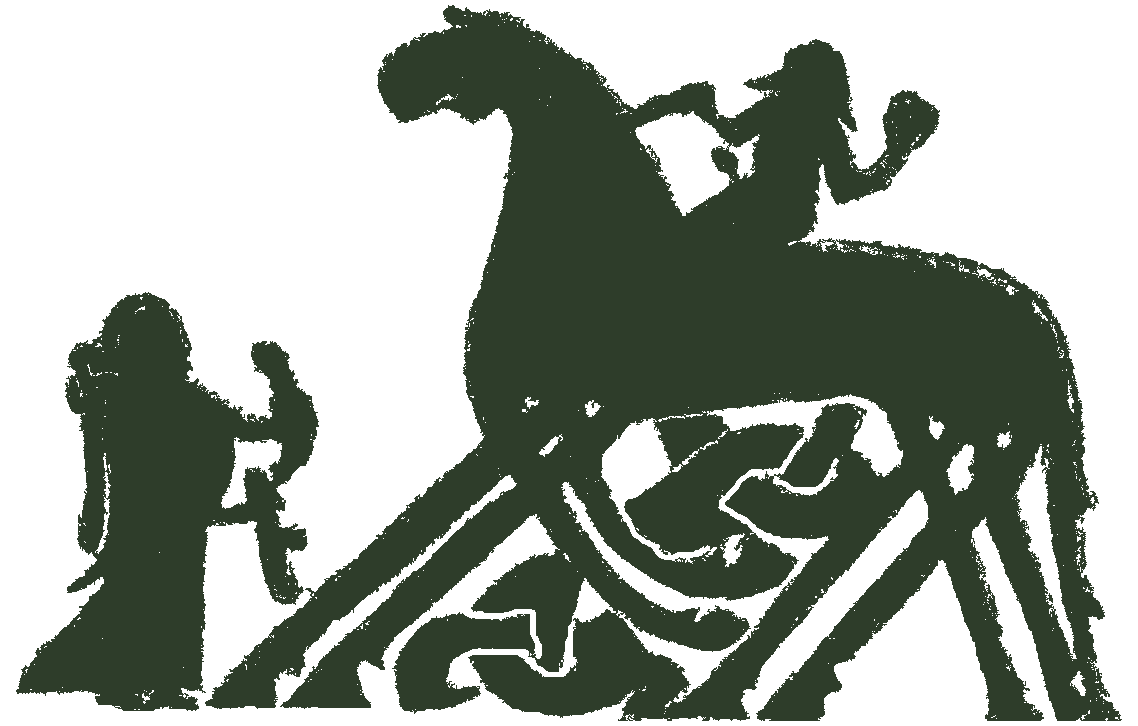in progress
A description of Yggrdasill, the world tree.
text
Gylf ch. 15d
15d. Yggdrasill
Þá mælti Gangleri: "Hvar er h... | Then spoke Gangleri: 'Where i... |
[status: unverified copy]
commentary
context
Gylfaginning, which is part of Snorra Edda, was composed in Iceland in the 13th century, and holds the stories of many of the Pre-Christian myths of northern Europe. It is believed to have been composed by the Icelander Snorri Sturlusson. Snorra Edda consists of three separate parts, Gylfaginning, Skaldskápamáland Háttatal, all functioning together as a greater work and guide for the aspiring medieval poet and storyteller.
commentary
Yggdrasil is the name of the world tree found in Eddic poetry as well as Snorri’s works. It is decribed in Völuspá 19, 47 and Grímnismál 35,44 as an ash. The tree may be said to function as a cosmological spatial structuring element, with its roots and branches stretching into all corners of the world, creating spaces and comes for all beings, living or dead. All elements of life, wisdom and knowledge seems to be connected to Yggdrasill, like Mimir’s well of wisdom and Urðr’s well of fate. However, the references to Ragnarök, the end of days, and downfall are also connected to Yggdrasill with how different animals are gnawing and eating of the roots and branches, such as 4 grazing deer and Níðhöggr, as well as Óðinn’s self-sacrifice of himself hanging in the tree. This may indicate references to a fate of downfall and the closing of Ragnarök.
The name ON: Yggdrasill differ in opinions of translation, but it may mean EN: “Ygg’s (Óðinn’s/Terrible) horse.” This may again refer to Óðinn’s self-sacrifice where he “rides the tree” into death, in the same way one “rides the gallows” when hung to death.
The idea of the world tree corresponds with wide spread ideas of the evergreen tree of life and wisdom found in many mythological traditions. As a world-tree, an axis of the world, supporting the heavens and the structures of the cosmology, Yggdrasill might be seen as a parallel to the Christian Legend of the Rood. Furthermore, Tacitus mentions (1st century AD) how the Celtic tribes worshipped a similar idea of a tree. The Old Saxon/OHG Irminsûl presents similar ideas, a sacred pillars/trees used for veneration.
Furthermore, imagery of the tree, branches and winding roots and twigs are widely seen as a defining element in iron age imagery and ornamentation as well as in medieval iconography and carvings throughout Scandinavia and the Germanic cultures.
For more, see for example:
Andrén, A. (2014). Tracing Old Norse cosmology: The world tree, middle earth, and the sun from archaeological perspectives. Lund: Nordic Academic Press.
Ellis Davidson, H. R, (1990), Gods and Myths of Northern Europe. London: Penguin Books. pp. 26-27, 143-145, 190-196, 201-202,
Hedeager, L. (2011). Iron age myth and materiality : An archaeology of Scandinavia, AD 400-1000. London: Routledge
Simek, R. (2007), Transl: Angela Hall. Dictionary of Northern Mythology. Cambridge: D.S. Brewer. pp. 175-176, 375-376
Steinsland, G. (2005), Norrøn Religion. Myter, Riter, Samfunn. Oslo: Pax Forlag. pp 98-105, 182-184, 217, 444-446.
(Contributed by Liv Marit Aurdal.)
tags
Main text: Gylfaginning
Attributes: tree Sacrificial tree Assembly Landscape Ritual Space Well Wisdom Æsir Creation
Named things:
Text sections: SnSt, Gylf ch. 15d
